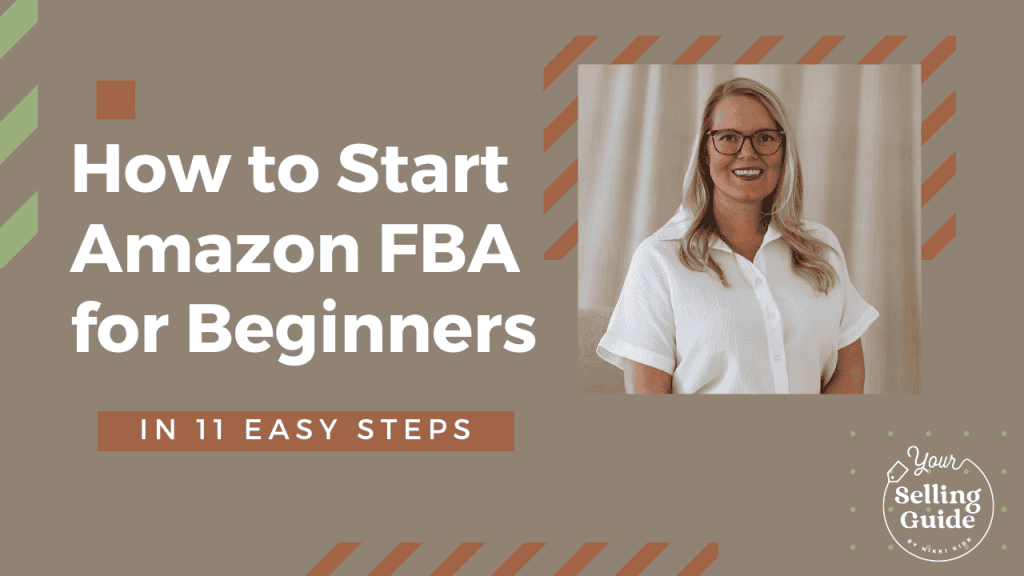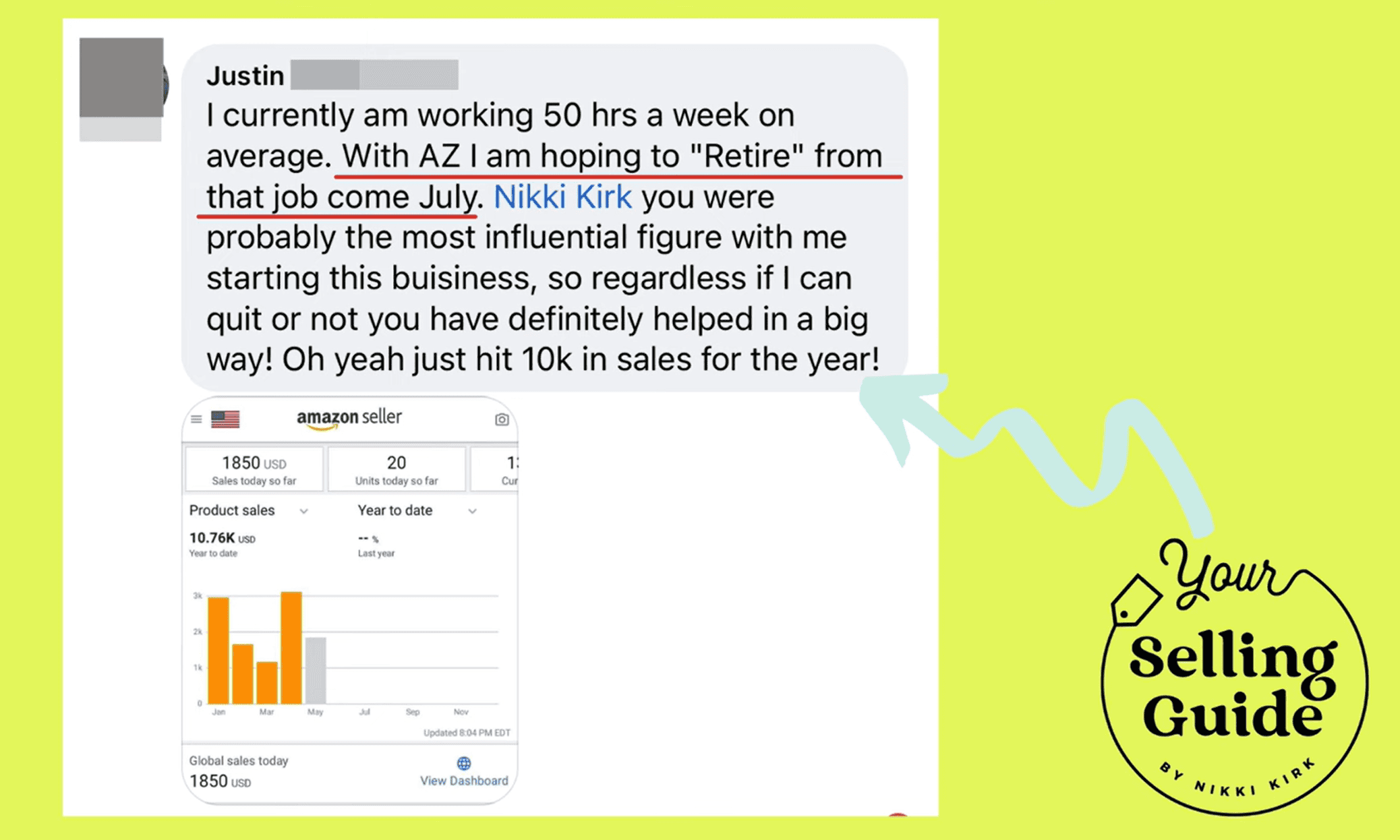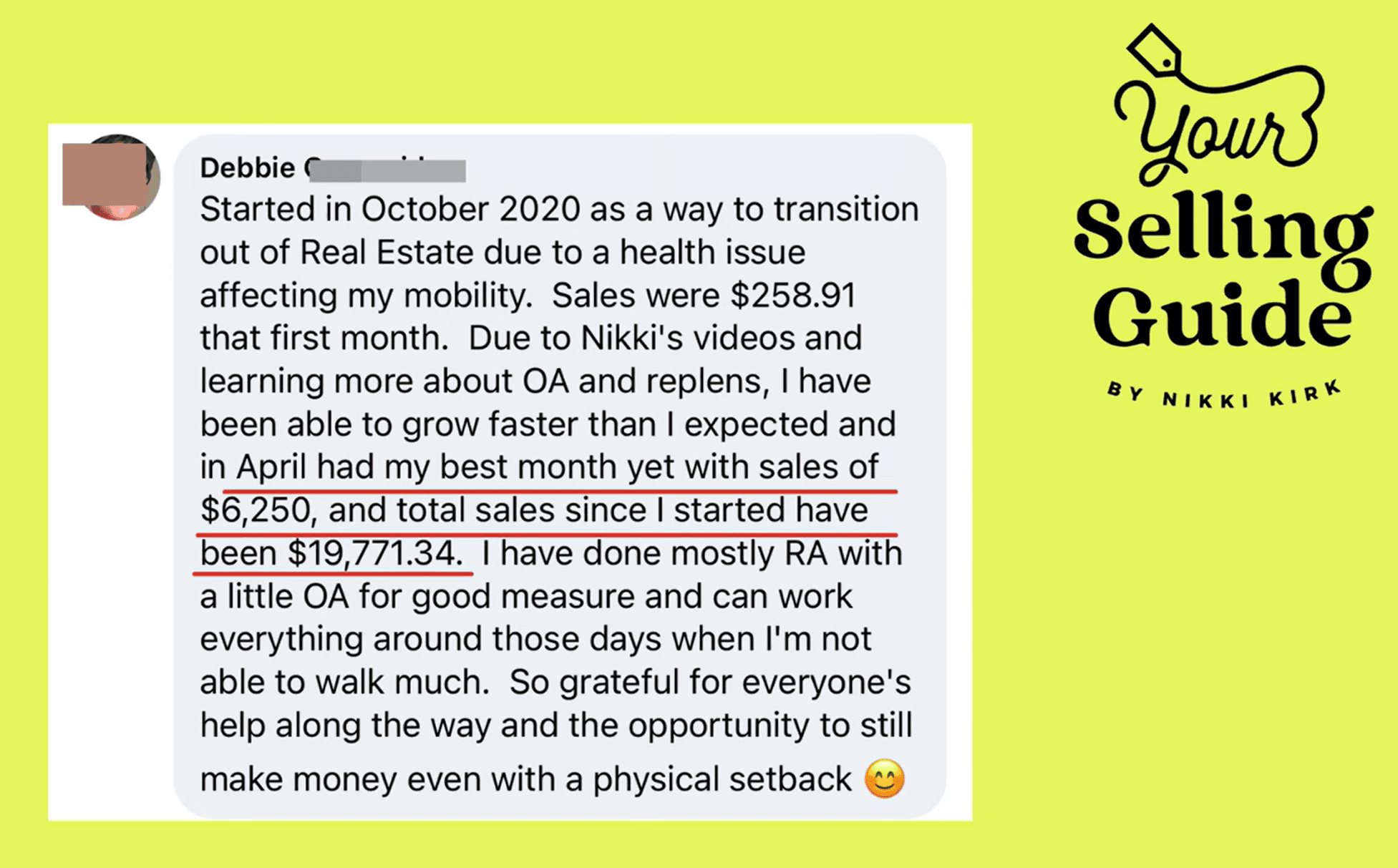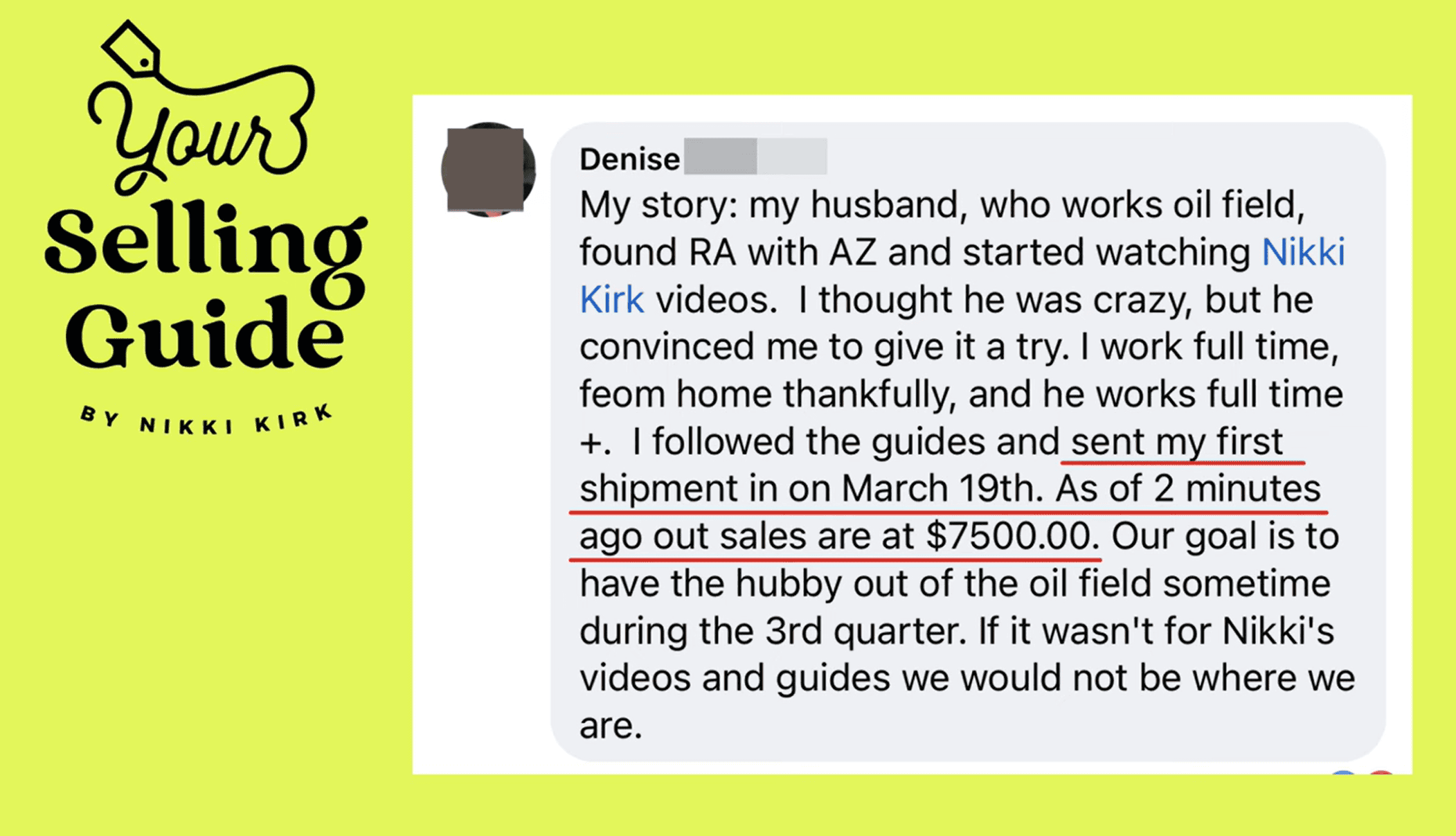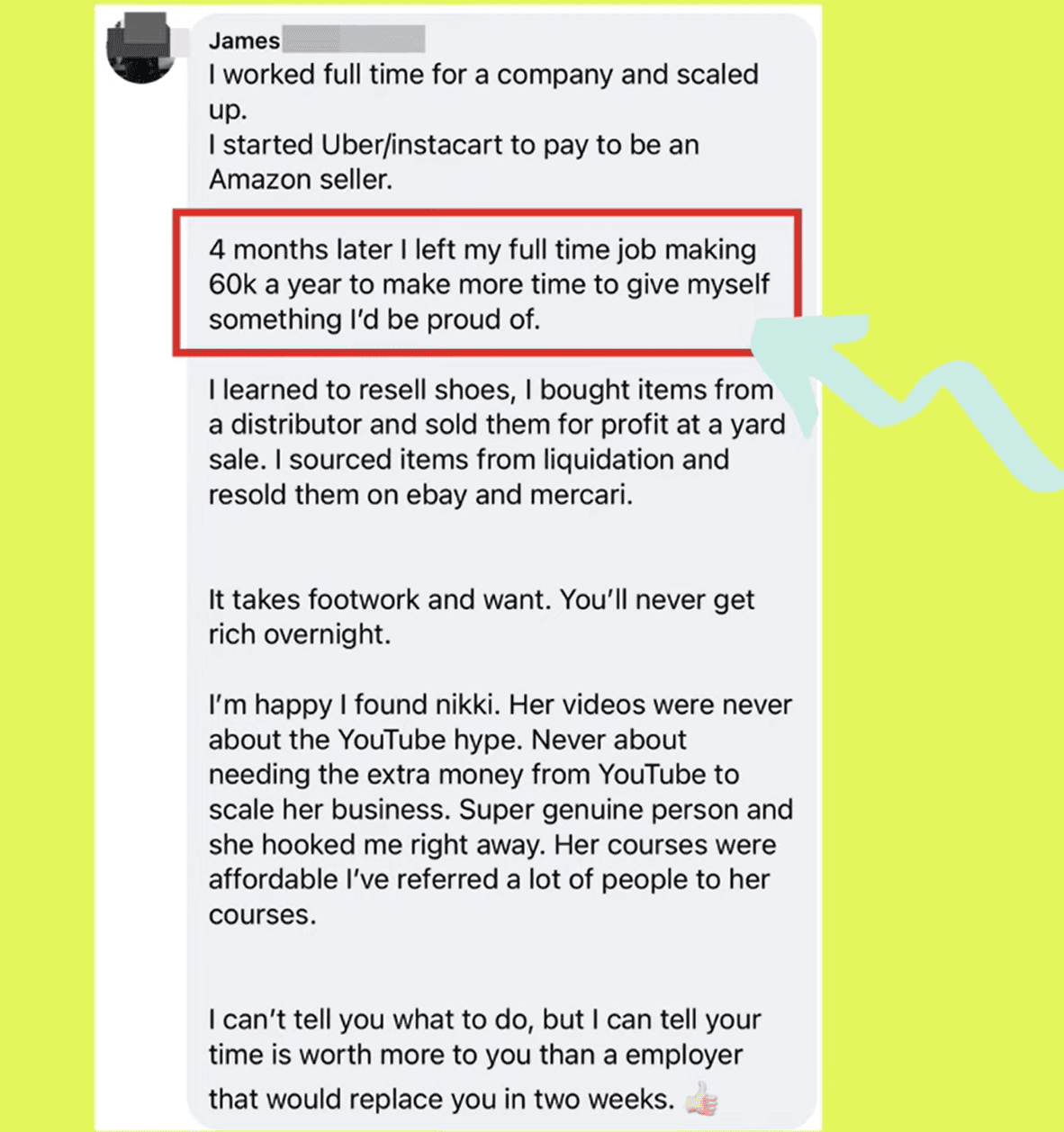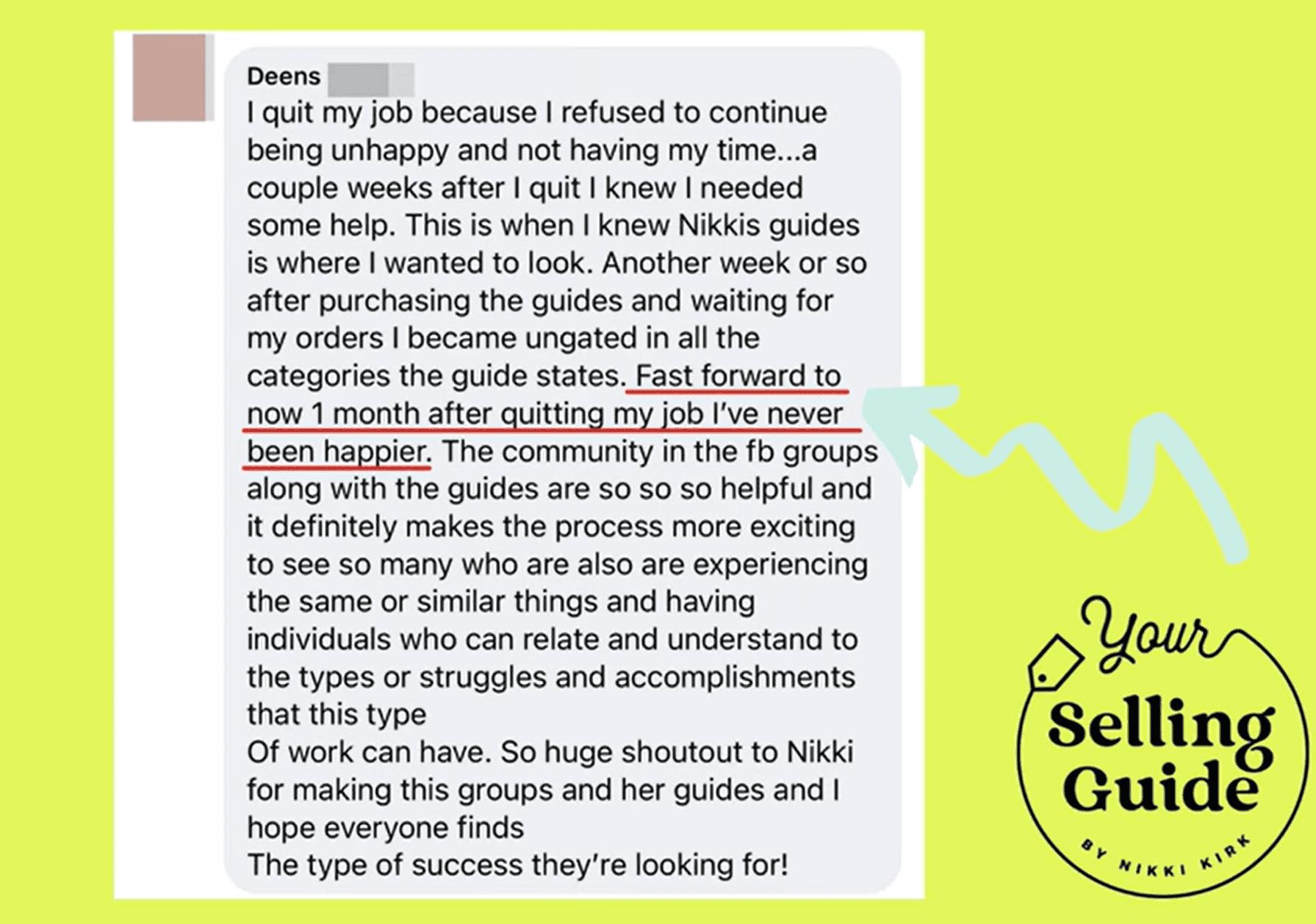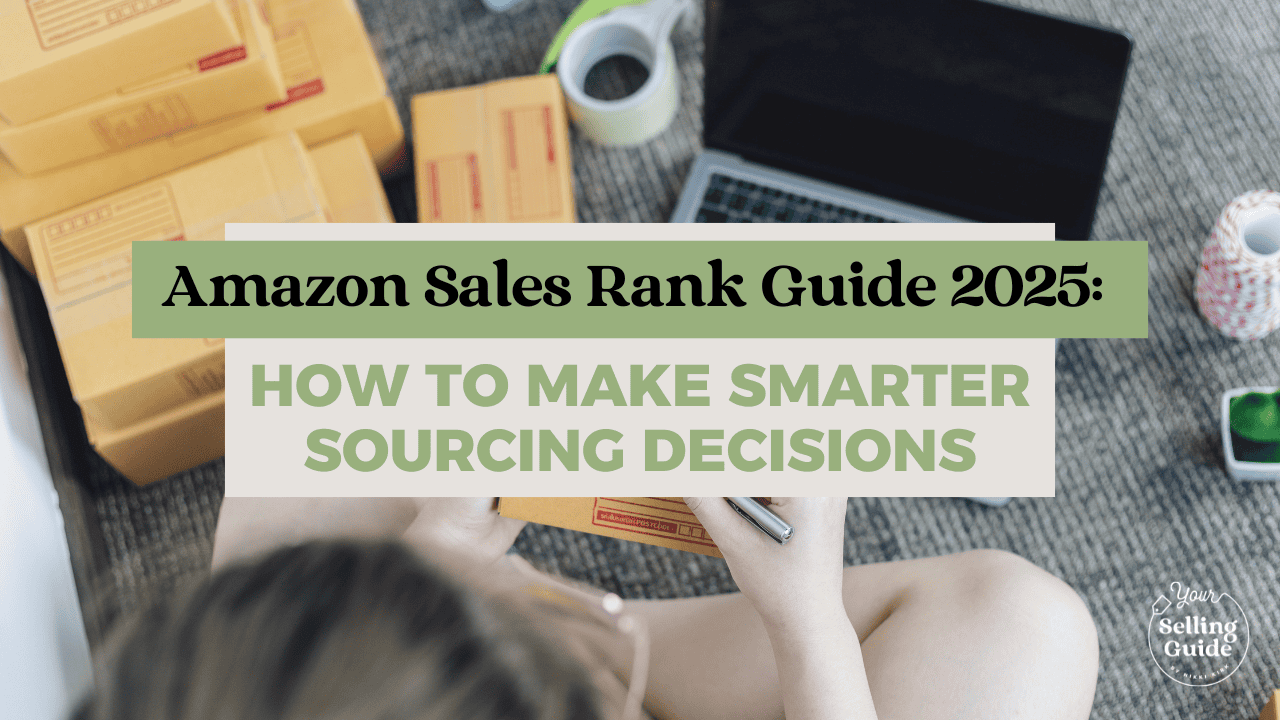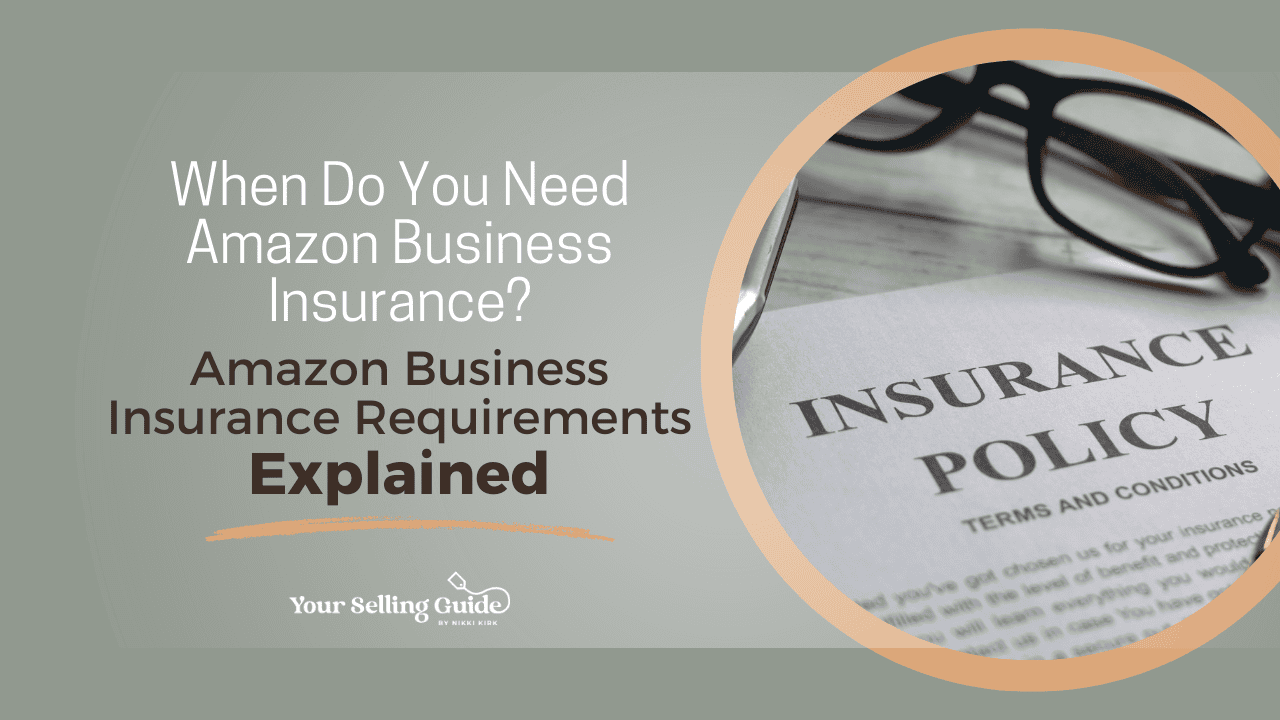How to start Amazon FBA selling? It’s easier than ever for beginners. With minimal initial investment and low barriers to entry, retail arbitrage on Amazon FBA is an accessible opportunity for anyone interested in e-commerce.
I’ve been selling on Amazon for over seven years, and I love the freedom it gives me. Working for myself means I set my hours and answer to no one—well, except sometimes Amazon.
My goal is to help beginners realize the potential of selling on Amazon, enabling them to become their own bosses or find a lucrative side income.
If you’re ready to start an Amazon FBA business, here are the Amazon FBA steps you need to take to begin creating profits.
1. Set up a Professional Account on Amazon Seller Central
The first step in starting your Amazon FBA business is setting up an account on Amazon Seller Central. While you can start selling with a free individual account, it comes with an extra cost—an additional $1 fee for every item sold.
Instead, I recommend starting your Amazon FBA business with a professional Amazon Seller Central account, which costs $39.99 monthly. The professional account offers more features and will save money in the long run. Plus, you can flexibly switch between individual and professional accounts anytime, depending on your needs.
If you want to experiment before fully committing, start with a sales tax certificate and operate as a sole proprietorship.
However, I recommend starting as an LLC or obtaining a business license. While this isn’t required, it offers benefits like legal protection and potential tax advantages.
Regardless of your choice, your business entity or Amazon seller account type is not a barrier to getting started on Amazon FBA. As your business grows and evolves, you can always change your business entity and tax information in your Amazon Seller Central account.
2. Budget: How Much Money Do You Need to Start Amazon FBA?
When starting your Amazon FBA business, you can set your budget based on your financial situation and business goals. The primary expenses you’ll need to cover include:
- A professional Amazon Seller Central account ($39.99/month if you don’t choose the free account)
- Supplies to pack your Amazon FBA shipments to send to the warehouse (more on that shortly)
- Investment to purchase your initial inventory
The most significant factor in determining your starting budget is how much initial inventory you want to purchase. Generally, the more extensive your initial inventory, the faster you can start making a profit.
I recommend spending between $500 and $1,000 to start an Amazon FBA business.
When I was an Amazon FBA beginner, I invested $1,750. This amount covered my packing materials, initial inventory, an Amazon FBA for beginners course, and some software. This initial investment accelerated my business launch and allowed me to profit sooner.
You read about the journey of my first six months as a beginner Amazon seller for more details on my Amazon FBA for beginners’ story and how this investment played out.
A key growth strategy is reinvesting your initial Amazon FBA profits into your inventory rather than withdrawing them for personal spending. Doing so will grow your business and profits faster.
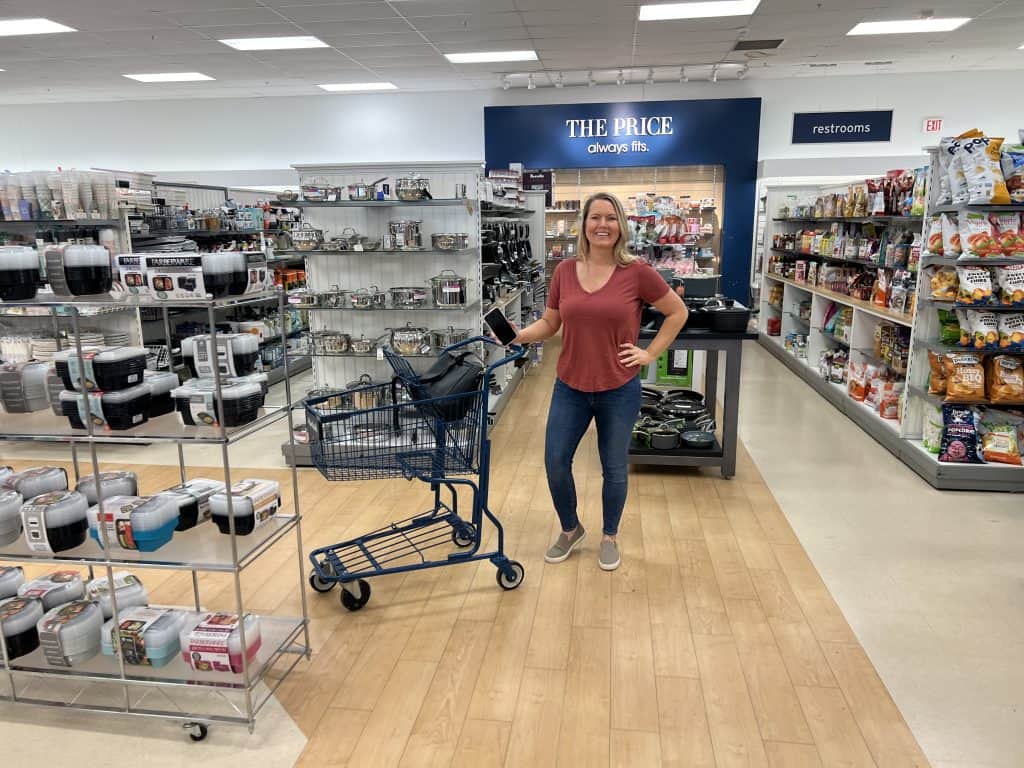
3. Purchase the Essential Tools to Start an Amazon FBA Business
Many tools, supplies, software, and apps will make selling on Amazon FBA for beginners easier and more profitable. However, these are the only tools you absolutely need to start:
- Boxes: You’ll need boxes to ship your product to the Amazon warehouse. You can purchase boxes at Walmart or get free UPS boxes here.
- Polybags: Use polybags to pack your Amazon FBA products. You can find suitable polybags here.
- Tape: You’ll need tape to pack your boxes securely.
- Printer and Paper or Labels: These are necessary for printing shipping labels.
- The Products You Will Sell: Your initial inventory is crucial for starting your business.
- Amazon Seller Central Account: A Professional Account costs $39/month.
You will need these bare minimum supplies to start selling on Amazon FBA. While many other tools and resources can make your business more efficient, these essentials are all you need to begin. For more recommended Amazon FBA for beginners tools, check out this list.
4. Start Scanning to Source Products: Retail Arbitrage For Beginners
Don’t overthink sourcing—just download the Amazon Seller App and head to your local Walmart, HomeGoods, or any store to find profitable retail arbitrage products to sell on Amazon FBA.
The hardest part of reselling on Amazon for beginners is finding profitable products. Retail arbitrage for beginners takes practice to learn the strategy. Here are two tips for Amazon FBA beginners:
- Download My Sales Rank Guide: This guide provides the basic guidelines for identifying good retail arbitrage products for beginners.
- Read My Blog Post on the Best Retail Arbitrage Items for Beginners: This article highlights some top items to consider when starting.
Retail arbitrage beginners should purchase a few promising items in small quantities to see how they perform. This Amazon FBA for beginners strategy helps you start learning without a significant upfront investment. It’s even better to purchase returnable items if you make a mistake.
5. List and Ship Your First Amazon FBA Inventory
Once you have purchased some items, the next Amazon FBA step is to list the products through Amazon Seller Central and ship them to the Amazon warehouse!
Use this guide to learn how to list, label, polybag, and bubble wrap your first shipment according to Amazon FBA’s requirements.
Once you have shipped your inventory, Amazon FBA will take care of the rest! Amazon will handle the storage, packing, shipping, and customer service of your products, allowing you to focus on finding more profitable items to sell.
6. Track Amazon FBA Beginner Profit
Amazon FBA beginners should track profit to understand what makes a profitable retail arbitrage product and to guide future sourcing decisions.
While I recommend investing in the many software options to grow your Amazon FBA business and simplify this process, you can start with a simple spreadsheet.
Record your expenses, sales, and profits to clearly show your business performance. By diligently tracking profits, Amazon FBA beginners can identify which products are successful and refine their sourcing strategy over time.
7. Ungating Categories For Amazon FBA Beginners
One of my biggest Amazon FBA beginner mistakes was not getting ungated sooner. Understanding and navigating gated categories is essential for a successful Amazon FBA business.
What Are Gated Categories?
Gated categories include high-demand areas such as Grocery, Toys, Pet Supplies, Beauty, Baby, and premium brands. These categories have restrictions, meaning when you start selling on Amazon FBA, you need approval from Amazon to sell products within them.
Why Should You Get Ungated?
Access to sell gated products, brands, and categories is crucial for growth and success on Amazon FBA for beginners. The profit potential in these restricted categories is significant.
At any given time, over 70% of my inventory is in these high-profit brands and categories. Getting ungated is a crucial Amazon FBA step because you unlock new opportunities, expand your product range, and dramatically increase your profits.
To learn how to start Amazon FBA selling in gated categories, explore my popular Ungating Guides.
8. Amazon FBA Beginners Should Join a BOLO Group
One of my biggest Amazon FBA beginner tips and tricks is to join a BOLO group. Accelerate selling on Amazon FBA by taking the guesswork out of sourcing and finding the most profitable items.
What is a BOLO Group?
BOLO stands for “Be On the Look Out.” These groups are Amazon FBA sellers’ communities sharing information about profitable products and sourcing tips. By joining a BOLO group, you can connect with other sellers like yourself and receive helpful answers and feedback. It quickly becomes a support group in addition to sharing profitable leads.
Benefits of Joining a BOLO Group:
- Get Answers to Your Questions: Benefit from the experience of other Amazon FBA sellers who have been in your shoes.
- Stop Endlessly Scanning. Save time by learning from the group’s collective knowledge and focusing on high-potential products.
- Learn and Grow: Get Amazon FBA beginner tips and tricks. Continuously improve your sourcing strategies and business practices through shared insights and advice.
- Get Special Access: Membership to the Your Selling Guide BOLO group includes all three US Ungating Guides. Group members are offered exclusive discounts and deals on other Amazon resources.
Joining a BOLO group can be a game-changer for starting an Amazon FBA business. It’s not just about finding profitable items; it’s about becoming part of a personal and supportive community.
Experience the camaraderie, gain confidence, and accelerate your success with the help of like-minded sellers with the official Your Selling Guide BOLO group.
9. Try Amazon FBM For Beginners
FBM stands for Fulfilled by Merchant. Unlike Fulfilled by Amazon (FBA), where Amazon handles storage, packing, and shipping, with FBM, you manage these aspects yourself. Therefore, with Amazon FBM, you store your inventory and handle shipping directly to customers.
Why is FBM Profitable and Potentially Better Than FBA?
- Control Over Shipping: You have more control over the shipping process, which can lead to faster delivery times and better customer satisfaction.
- Lower Fees: FBM can have lower fees than FBA, especially for larger or heavier items, where FBA fees can be substantial.
- Flexibility: With FBM, you have more flexibility in managing your inventory and can offer a broader range of products.
- Increased Profit Margins: By managing fulfillment yourself, you can reduce costs and increase your profit margins.
For more details on how to get started with FBM, dive into my FBM Complete 101 Guide.
10. The Next Amazon FBA Step: Invest in More Tools
Investing in the right tools will make sourcing and running your Amazon FBA business faster and easier and help you achieve better returns on investment.
The first Amazon FBA tool you should invest in is Keepa. Keepa provides detailed pricing and a ranking history for almost every product on Amazon.com. This information is crucial for deciding whether a product will sell and make a profit.
To learn more about how to use Keepa, check out this blog post.
Other recommended initial tools for Amazon FBA beginners include a Rollo printer for efficient label printing, a scanner for quick product identification, and Sellerboard for tracking your financial performance.
I’ve also compiled a comprehensive list of the best software tools to enhance your Amazon FBA business.
11. Buy an Amazon FBA Course For Beginners
This Amazon FBA step really should be step 1. Although this Amazon FBA step is optional, I highly recommend it because it will make the rest of the Amazon FBA step-by-step easier.
A good Amazon FBA course for beginners can help you learn and start selling more quickly. It’s an opportunity to avoid my mistakes when I started an Amazon FBA business and learn strategies from experienced sellers.
There are many Amazon FBA for beginners courses out there, but I’ve worked hard to create one that I think most comprehensively serves new sellers: Amazon FBA Beginners Guide.
What’s Included in This Amazon FBA Beginners Guide
This course will teach you Amazon FBA step-by-step, including everything you need to know about selling on Amazon, retail arbitrage, online arbitrage, FBA, and FBM.
- Amazon FBA Step-by-Step Training Modules: The Amazon FBA for beginners course includes 14 lessons totaling over 4 hours of training you can complete at your own pace.
- No Fluff: I keep my Amazon FBA beginner’s guide as straightforward as possible to make the most out of your time.
- Access Anywhere: The Amazon FBA course is available at home or on the go via a computer browser, iOS, or Android app.
- Community of Sellers: Access a private group of like-minded Amazon sellers where you can chat, ask questions, and get real-time answers. I am also in the group and get notifications whenever someone comments or messages.
Why This is the Best Amazon FBA Beginner Course
This Amazon FBA for beginners course is the closest thing I will ever offer to one-on-one training. My Amazon FBA Beginners guide is a must if you want my help!
I cannot stress enough the importance of community in starting an Amazon FBA business. In the Amazon FBA beginners community, you will learn from other sellers, get encouragement, and continue your journey even when things get tough.
I am proud of the community I’ve built for Amazon FBA beginners, and now you can have it along with this course.
Testimonials About the Amazon FBA Course For Beginners
See what other sellers love about this beginner course!
FAQ about the Amazon FBA Beginner Course
How do I know this course is right for me?
If you’re prepared to start selling on Amazon FBA but are stuck on the next steps, need more help getting started, or set up an account but can’t find the right products, this Amazon FBA for Beginners course can help dramatically.
What is the Amazon FBA Beginners Guide group?
The Beginner FBA Support Group is all about the course. It comprises other people going through the course and learning how to start an Amazon FBA business. Read responses to questions from new FBA sellers, or ask questions yourself.
Do you offer a money-back guarantee?
Yes! I’ll return your payment if you realize my Beginner FBA Amazon Selling Course wasn’t right for you within 30 days.
Learn How to Start an Amazon FBA Business For Beginners
Skip all the Amazon FBA steps and start your business strong! I’m here to offer you every advantage a beginner Amazon seller can have. If you’re ready to join the course and learn how to start selling on Amazon, we would love to have you there.
